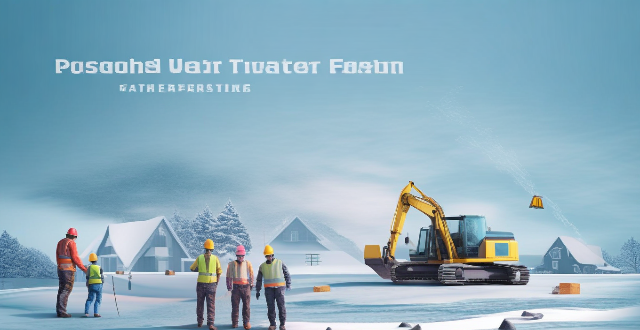The text discusses the impact of various weather conditions on building safety during construction. It highlights the risks associated with extreme heat, cold weather, rain and water, strong winds, snow and ice, and lightning and thunderstorms. The conclusion emphasizes the importance of monitoring weather forecasts and adjusting working procedures to ensure worker safety.

How Weather Conditions Affect Building Safety During Construction
Introduction
Construction sites are dynamic environments where safety is paramount. Weather conditions can significantly impact the safety of workers and the integrity of the structure being built. This discussion will delve into how various weather conditions affect building safety during construction.
Extreme Heat
- Worker Fatigue: High temperatures can lead to heat exhaustion and fatigue, impairing judgment and increasing the risk of accidents.
- Equipment Malfunctions: Heat can overload machinery, causing unexpected breakdowns or failures.
- Material Issues: Some building materials may expand or soften in extreme heat, affecting their performance and safety.
Cold Weather
- Freezing Temperatures: Below-freezing temperatures can make materials brittle, leading to breakages and increased risk of injury.
- Ice Hazards: Frozen surfaces can create slippery conditions, increasing the likelihood of falls.
- Concrete Curing: Cold weather can slow down the curing process of concrete, affecting its strength and durability.
Rain and Water
- Slippery Surfaces: Wet conditions can make walking surfaces slippery, increasing the risk of slips, trips, and falls.
- Electrical Hazards: Water conducts electricity, raising the risk of electrocution if equipment is not properly grounded or insulated.
- Structural Integrity: Excessive water can cause soil erosion or foundation issues, compromising the stability of structures.
Strong Winds
- Flying Debris: Wind can pick up loose materials, turning them into projectiles that pose a danger to workers and bystanders.
- Shelter and Stability: High winds can topple scaffolding, temporary structures, or unsecured materials.
- Lifting Operations: Cranes and other lifting equipment must be secured against strong winds to prevent accidents.
Snow and Ice
- Visibility and Access: Heavy snowfall can reduce visibility and make access to the site difficult and dangerous.
- Roof Loads: Accumulation of snow on roofs can exceed their load capacity, posing collapse risks.
- Equipment Performance: Snow and ice can affect the functionality of machinery and tools.
Lightning and Thunderstorms
- Electrocution Risks: Lightning strikes pose immediate danger to workers and can damage equipment.
- Project Delays: Storms can halt work progress until conditions improve, impacting schedules and budgets.
Conclusion
Weather conditions play a crucial role in determining the safety measures required on a construction site. It's essential for project managers to monitor weather forecasts and adjust working procedures accordingly to ensure the safety of all personnel involved. By taking appropriate precautions, construction sites can remain safe havens even under challenging weather conditions.